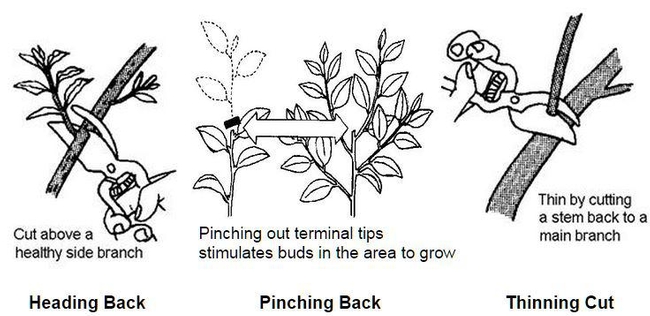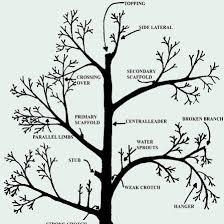When should I prune shrubs in the landscape?
Knowing when to prune and how to prune are important aspects of gardening to know; especially to be a relaxed, at-ease gardener. The first rule is to understand that not all shrubs and plants need to be pruned. One principle of gardening is right plant-right place. Don't plant where there is insufficient room for the plant so that annual trimming is necessary to keep the plant in bounds.
I think Rule 1b is to consult a pruning guide and look up the plant to see if pruning is recommended and if so when and how should it be done. Remember that not all plants need to be pruned and if those that don't need pruning are pruned, it may cause more harm than good if their natural form is good to start with. There are also safety reasons to remove plant material that is hazardous to people on walkways, driveways, or paths where people traverse.
The second rule; Plants that bloom early, roughly before May 1, are pruned after they bloom. This group includes Spirea, mock orange, Weigela, Camellias, and Lady Banks Rose as examples. The flower buds for these early bloomers are often set in the summer before the spring bloom (old wood bloom set), so pruning before bloom will eliminate many of the flower buds.
Third Rule: Summer flowering plants that bloom roughly after May 1 and have blooms that occur on new growth are usually pruned in the winter or early spring before bud break (new wood bloom set); e.g., butterfly bush, Caryopteris, crape myrtle, roses, and some hydrangea. This also includes fruit trees such as plums, peaches, pears and apples. It is good to avoid winter or spring pruning of cherries and apricots because they are susceptible to Eutypa, a fungus disease that will gain entrance through pruning wounds and cause die back in the infected limb. These two trees are best pruned after the crop in harvested in the summer.
Fourth Rule: Hydrangeas. Hydrangeas account for lots of pruning questions. That is because some bloom on "old wood" (Rule 2) while others bloom on "new wood"(Rule 3). Hence you need to identify what kind of hydrangea you have and follow the appropriate rule. Hydrangea macrophylla, the ones with big blue or pink flowers, and Hydrangea quercifolia, oakleaf hydrangeas, both bloom on old wood and hence follow Rule 2. The little pruning they need should be done immediately after flowering. Hydrangea paniculata, which have white, conical flowers, and Hydrangea arborescens, such as ‘Annabelle', bloom on new wood. They will produce better flowers if cut back in late winter.
Fifth Rule: Don't be afraid to prune at any time for diseased, dead, broken or crossing branches, or stray branches whose removal could improve the appearance of your shrub. For more information on pruning, go to: https://dyckarboretum.org/pruning-guide/. It is also possible to keep fruit trees at a lower height by summer pruning which decreases vigor. For more information on summer pruning and training of fruit trees see: http://homeorchard.ucdavis.edu/8057pdf

